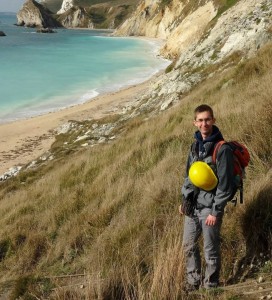 James Lewis is a PhD student at Imperial College London in the field of Planetary Geochemistry. When not blowing up gas cylinders, or hunting for jarosite, he can be found wandering the streets of London as an amateur photographer. James also suffers from Thesisitis, a common condition among third-year PhD students. He can be found on Twitter as @jmtlewis.
James Lewis is a PhD student at Imperial College London in the field of Planetary Geochemistry. When not blowing up gas cylinders, or hunting for jarosite, he can be found wandering the streets of London as an amateur photographer. James also suffers from Thesisitis, a common condition among third-year PhD students. He can be found on Twitter as @jmtlewis.
When I was applying for PhD projects two and a half years ago I found it slightly frustrating that no one could give me a definitive description of what a PhD is like. There was no single answer as to what the challenges would be or the timescale at which practical work and writing up would play out or what was expected of me. Now that I’ve just become a third year student I’ve come to realise that there’s a reason for this. A PhD project has so many variables: the nature of your supervisor; the department; lab work; field work; modelling, and so on. New postgraduate research students can’t be given a rigid road map for their entire project because generally in the space of a few weeks or months things will change so much that the original plans will be almost meaningless. If you’re just starting out with your project don’t let this scare you but embrace the fluidity of academic research. While it’s important not to stray too far from your core project aims some of the most interesting and publishable work comes about when people explore why something didn’t work or following up an unanswered question identified through reviewing the literature.
